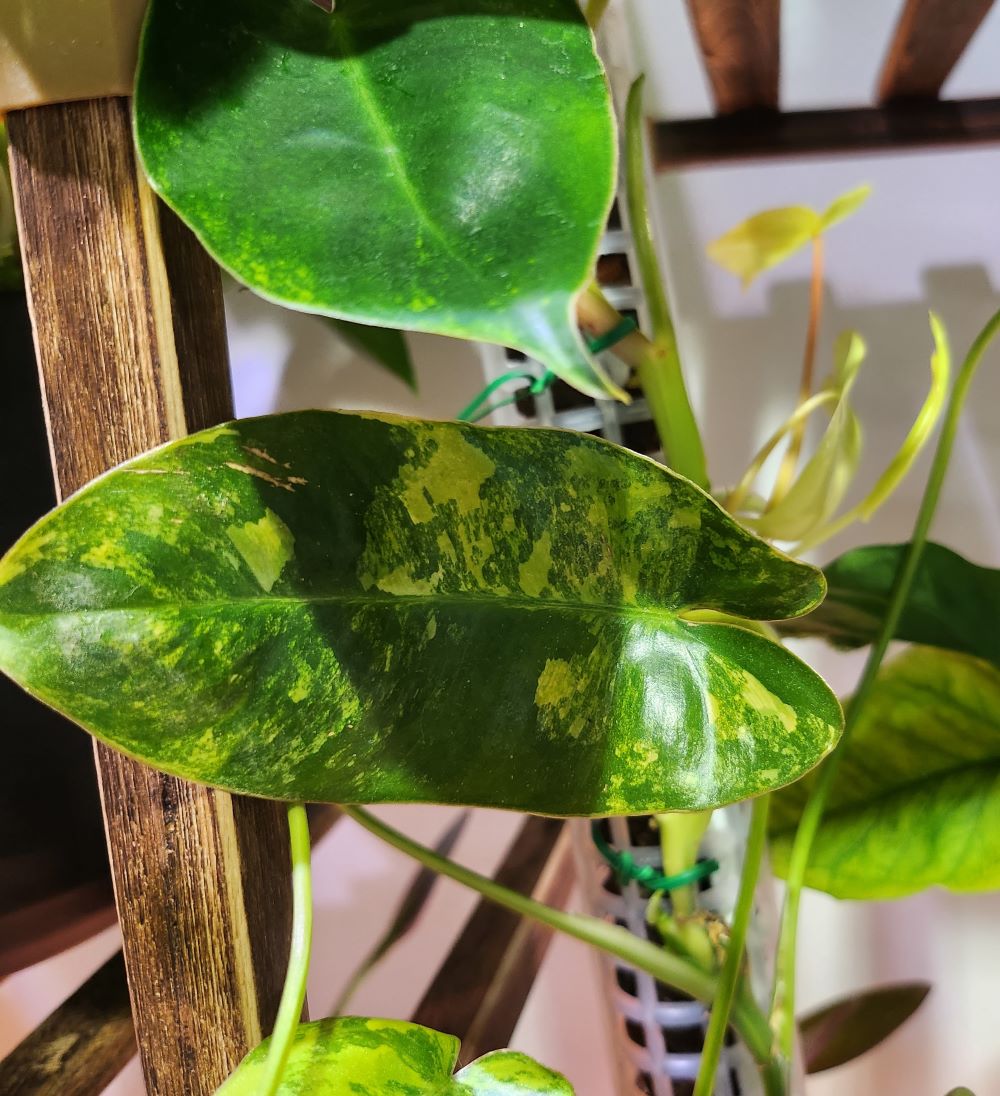Giving plants support to climb is very important for some plants.
Think Monstera Deliciosa and Florida Green Philodendron. While some plants can be trailing, giving them a pole to climb will provide you with much larger leaves. However, with LECA, this process is complicated because of the reservoir LECA requires.
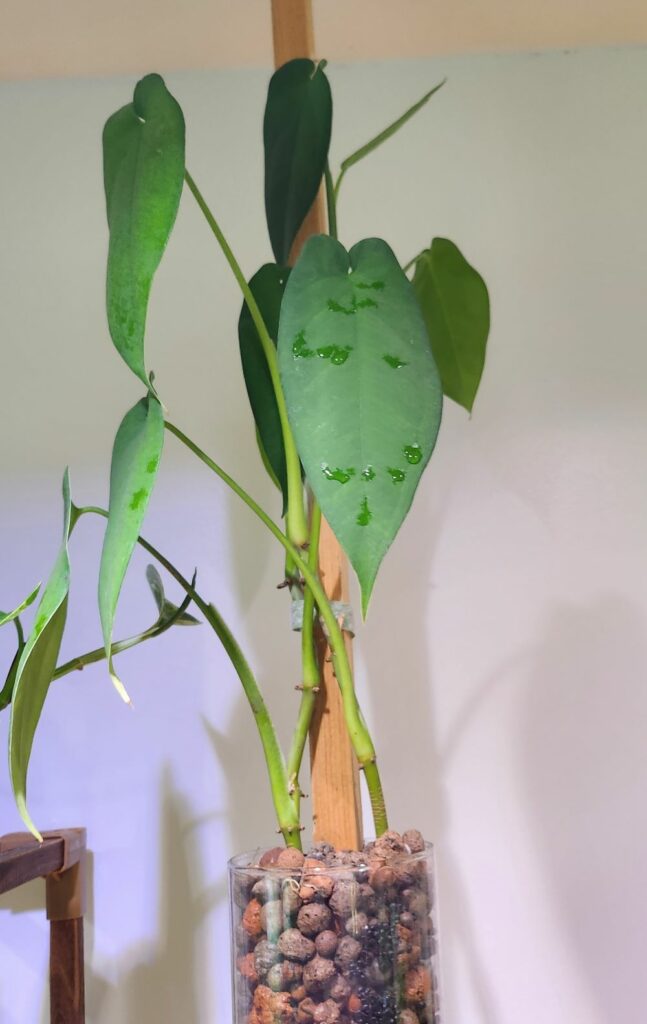
Moss
Moss poles are the classic option for climbing plants, but you risk contaminating your reservoir with moss. Since LECA is a nonbiological substance (clay balls), adding moss can be problematic, this is why you must clean the roots fully of dirt before transfer to LECA. Also, moss will cling to roots and can facilitate root rot when there is a reservoir. However lots of LECA users swear by their moss poles.
Additionally moss poles can be expensive; you can make them yourself, but frankly, it’s a pain. I choose not to in almost every instance. When I do use them, its a combo of a pre made plastic pole with LECA on the bottom, then moss once I’m well above the water line.
An additional issue with moss poles is watering them. The whole point of moss poles is letting roots grow into the moss, leading to large leaves and better support. This only works if the moss is moist. Watering moss poles is largely annoying and time consuming, with a collection of my size its generally not worth it, but for just a few plants it would be more doable.
Wood
Cedar wood stakes or planks are my favorite option for a few reasons:
- They aren’t messy like moss poles
- They look good and blend in well with my plant vibe.
- They also allow roots to grow into them so leaves are bigger
- They are largely inexpensive and easy to find
- You can cut them to whatever size you want
- You don’t have to water them like you do with moss poles
However, they generally need to be outside the reservoir due to the risk of rot, which can be challenging. I have taped them to the back of pots before. However, this is not aesthetically pleasing at all, and largely ruins the plant vibe.
I tried spraying a waterproof coating on the end of the wood that would sit in water; this has had varying levels of success but does work, just not 100% of the time.
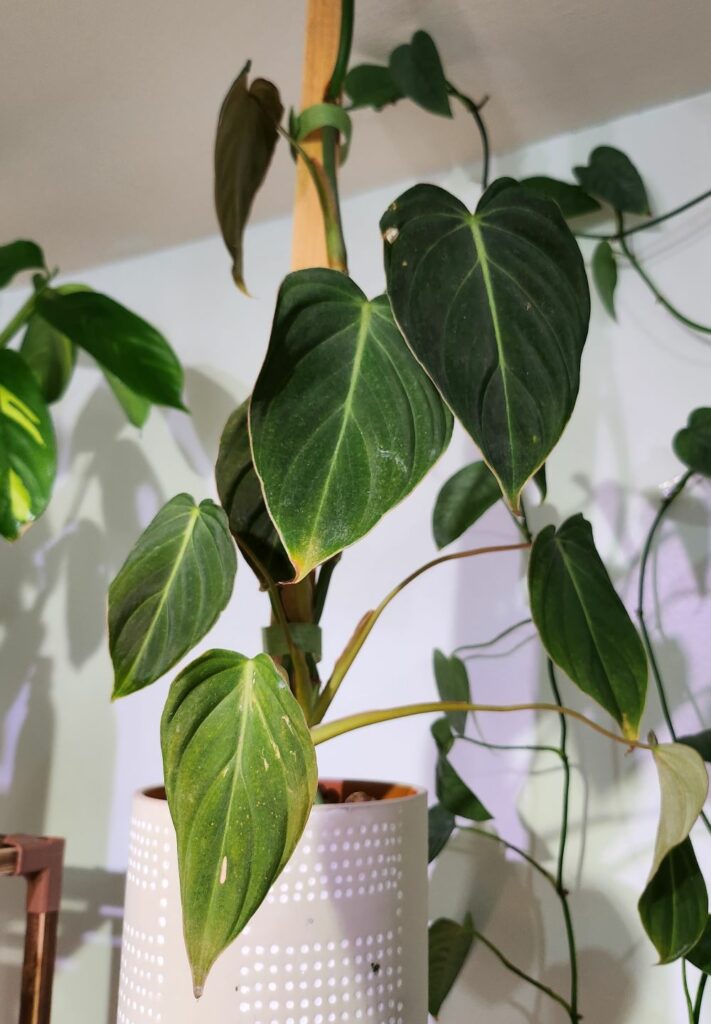
I also tried sticking cedar stakes (cedar is the type of wood most resistant to rot from water) in the LECA and hoping for the best. This largely failed, and I got rot on the stake within a few weeks to months and had to repot. I wouldn’t recommend it.
I also have one plant with bamboo stakes, for support only. Its a fiddly fig so leaves get big regardless. I have had no issues with rot using these, are they are cheap and easy to find. I generally perfer something that my plants can truly grab onto, to get those bigger leaves.

Plastic
Clear plastic rods also work; they are unobtrusive and not overly expensive, but they are mostly flimsy and do not hold larger plants up. Also, they are not a surface that plants can root into. Moss poles and wood are great because plants can root into them, making them more stable and increasing leaf size dramatically. Plastic does not achieve this same result.

PVC pipes are also used frequently; they solve the flimsy issue with clear plastic stakes. However, they are straight-up ugly. They also are plastic, so plants cannot grow into them. It’s a very functional and cheap choice, but ugly.
Trellis
Both Etsy and Amazon are full of small trellises that you can use; they generally aren’t large and are only around a foot tall. These are more aesthetically pleasing but can be expensive if you need a lot of them for your collection.
They are in many designs, plant leaves, honeycombs, ladders ect. They come in wood, plastic and metal depending on your perference. I have a few that I use, but they aren’t my favorite and generally don’t help support my plants enough to justify the cost, they are very cute though.
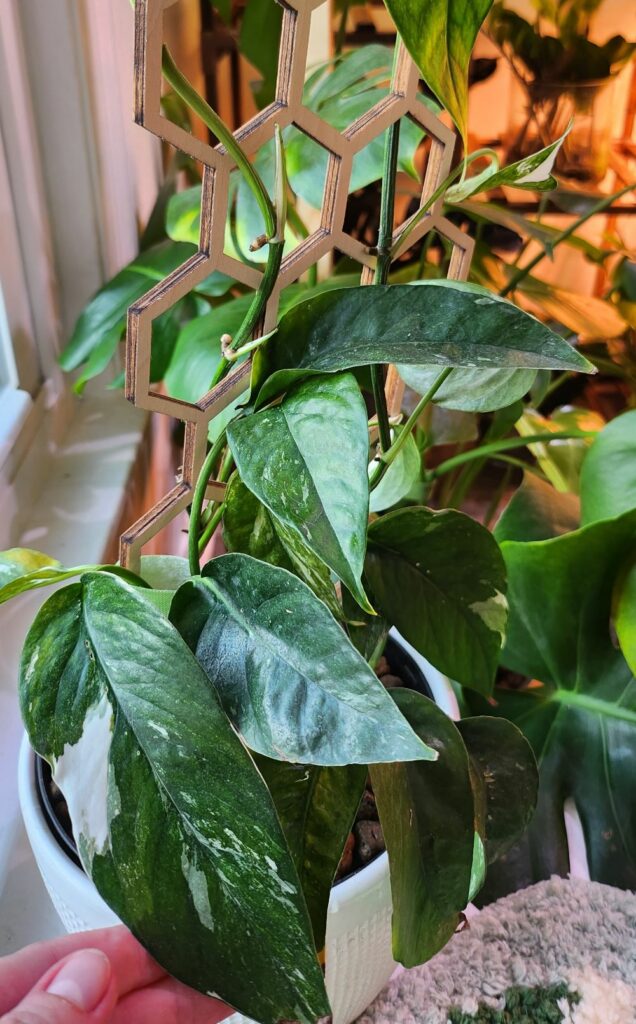
Metal
Metal pipes can be used the same way as PVC pipes. They do look somewhat better if you like the industrial look. I don’t personally, and these metal pipes are pricey, so it’s not worth it for me.
There are also vairous metal stakes you can get at any garden center, these work and are generally pretty tall and skiny, making their usefullness limited in my opinion. I have used them in some instances.
There are also small thin metal rods with a spiral on one end to hold your plant up, these are generally small and give only minimal support. They also don’t work for plants with many leaves or stems. I’ve used them in the past but now I prefer other methods
LECA in Plastic Poles
I tried an empty moss pole from Amazon and put LECA in it, to hopefully achieve an unobtrustive look and for my plants to grow into the LECA in the pole for support. However, the capillary action of LECA was not strong enough to bring water up the pole. Thus, it functions just as a regular plastic pole would, making the LECA in it essentially useless.
My solution is an empty moss pole filled with LECA, with a cotton-wicking string up the center of it. This is not a foolproof option, but it does help the LECA bring the water up from the bottom of the pot. This really only works for shorter poles; anything taller than 1-2ft isn’t going to work. But it does work for my smaller plants that I want to give a chance to climb.
This can be pricey because of the plastic net pole that you need, I got a 12 pack for $37 on amazon. The LECA you likely already have and the wicking string is cheap on Amazon. This could be cheaper if you were willing to use chicken wire to make your own net pole, but for me thats too much effort to justify the money saved.
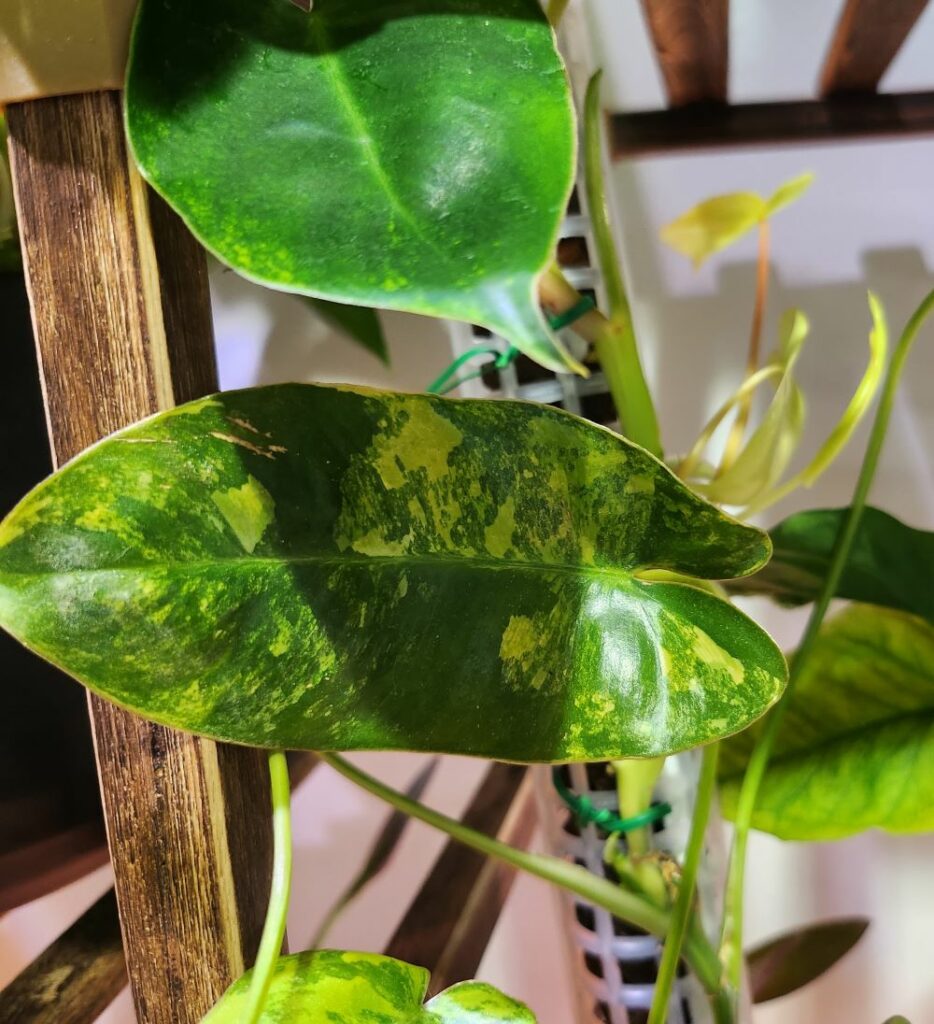
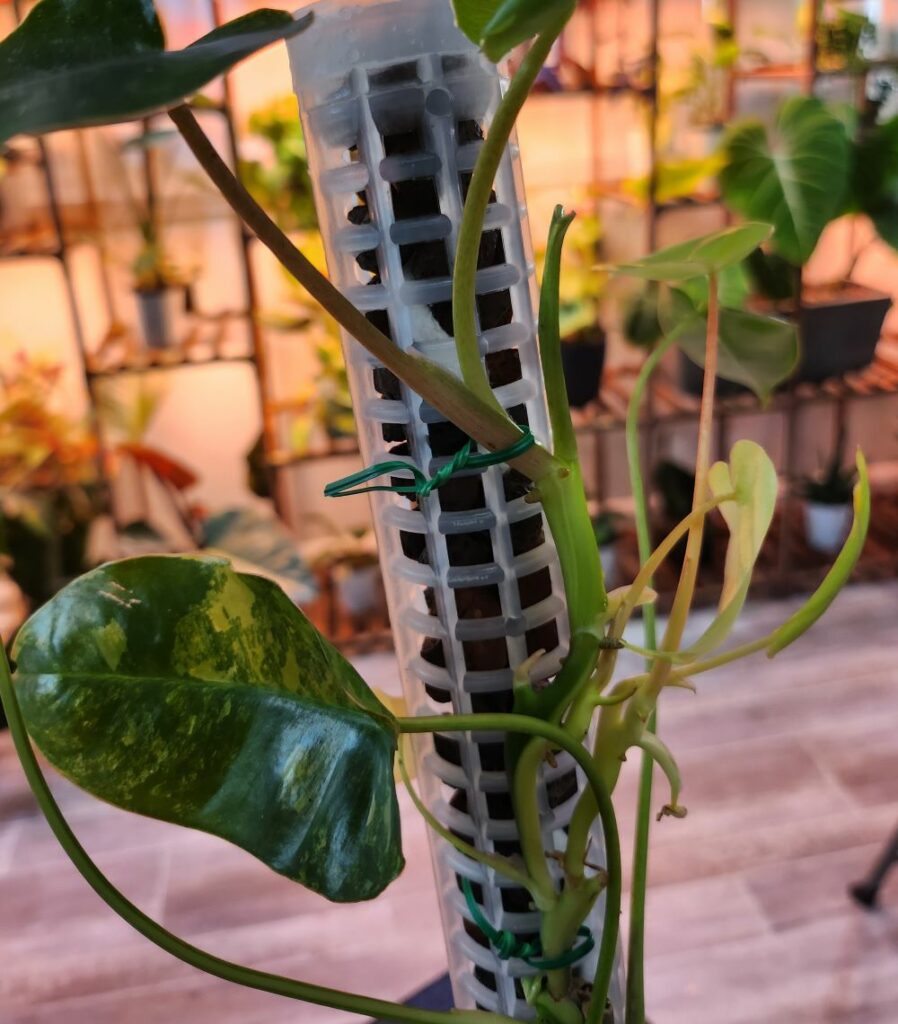
What I Do Now
Currently, my setup is a mixture of LECA poles with wicking string and wood stakes with a waterproof spray on the bottom. Neither option is perfect. I also have tried to limit the number of plants I have climbing; some I have no choice, my monstera and burle marx are good examples, but my Syngonium albo is more than happy to be a trailing plant.
Also, in those plants that don’t require a pole but that I’d like some verticle growth on, I give them a small 1-2ft pole with LECA and a wicking string; that way, they climb some and give me those large leaves that I want, but also trail as well.
Overall, a lot of this comes down to personal preference. Maybe you want those large leaves and are okay looking at the less-than-cute PVC pipes. Or perhaps you’re willing to deal with the hassle of moss poles in LECA. I recommend trying all the options, and seeing what works for you.
- Click here for details on how take cuttings
- Click here for different ways to propagate your cuttings
- Click here for info on fertilizer and flushing
- Click here for help transitioning soil plants to LECA
- Click here for quick start guide to LECA
- Click here for help with root rot
- Click here for more details on me and why I love plants
- Follow me on instagram @chaosplant or Facebook @ChaosPlants
Feel free to message or DM me with questions. Love to talk all things plant and will gladly help you on your plant journey.
